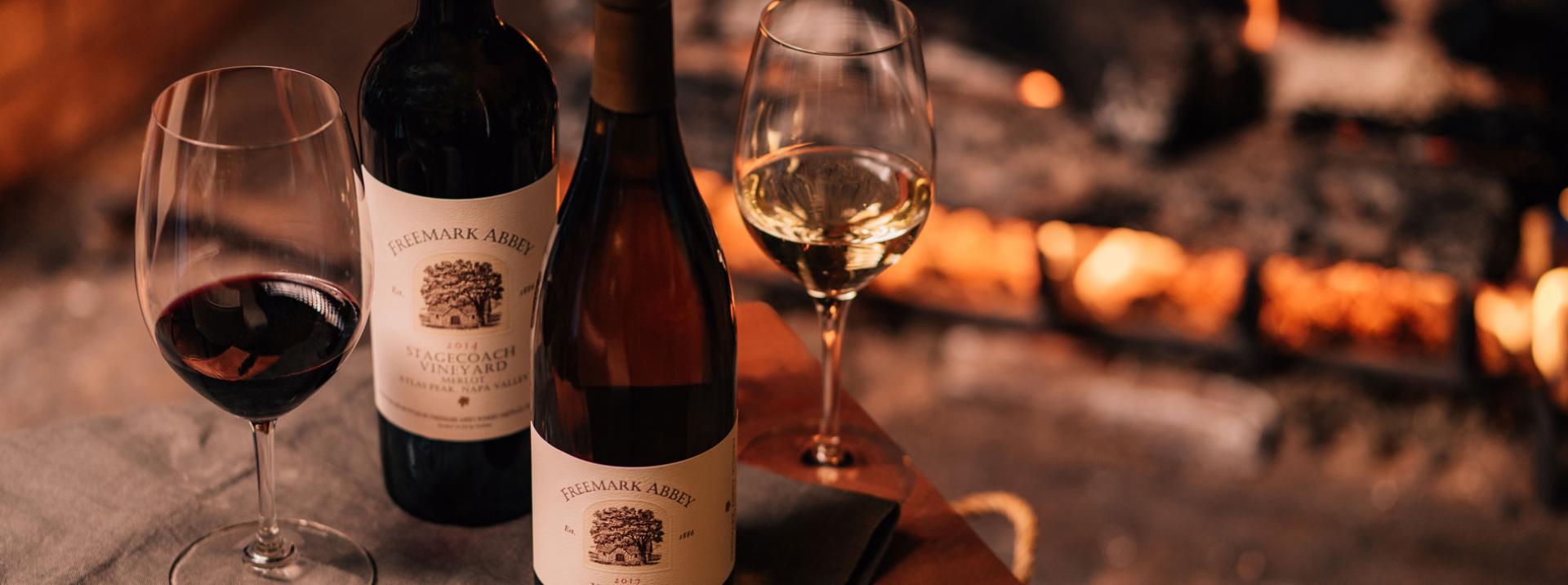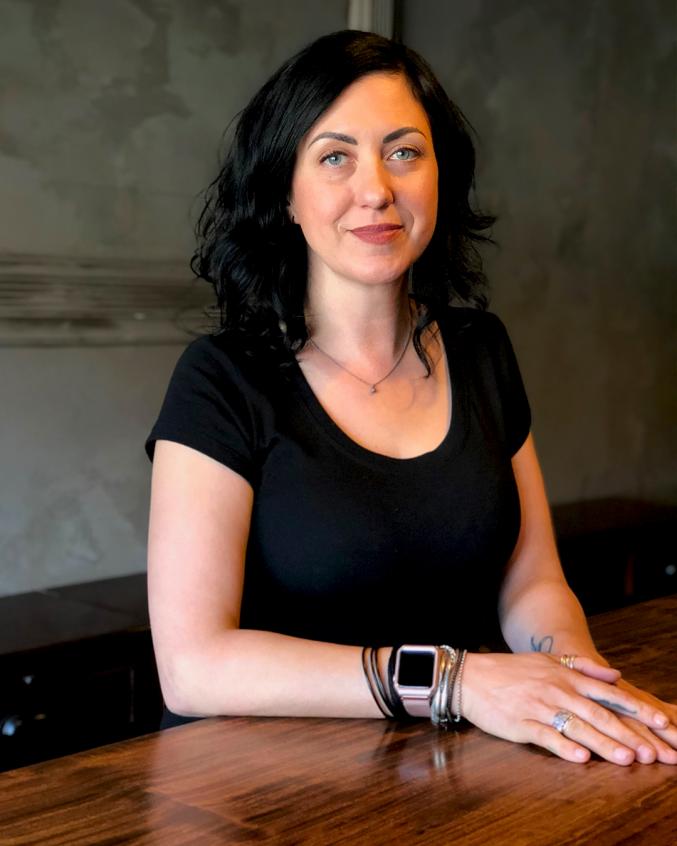Image

By clicking Submit you verify that you are 21 years of age or older and agree to our cookie policy.
Submit
What a difference fourteen years make.
When Miles Raymond, the main character in 2004’s Sideways, spoke his famously less-than-flattering line about Merlot, it was something of a dagger in the heart to winemakers and growers of the grape here in Napa Valley and elsewhere along the West Coast. Miles’ contrarian quip was one of several zingers penned by Alexander Payne in his Oscar-winning screenplay. But it was the only one that sent a whole industry category into a tailspin.
Flash forward to September, 2017, when Bloomberg reported in their wine column that “wine fashions are fickle, and now velvety merlot is experiencing a comeback.” In this post-Sideways era, one of the world’s noblest red wine varieties is justifiably reclaiming its place at the table—and in the cellar.

Fashionable or not, Merlot has long been an important part of the cellar at Freemark Abbey. “The first vintage was 1989, and we have made one every year since,” Winemaker Emeritus Ted Edwards recently pointed out with pride. “And we did make it in 1975 and 1985.” Those earlier bottlings were, as he described them, “one shot deals,” but they helped work varietally labeled Merlot into the Napa Valley lexicon. For nearly three decades, Ted and his team have crafted an elegant counterpoint to the single-vineyard and AVA-specific Cabernet Sauvignons that fill the Freemark Abbey wine library. Doing so, they’ve demonstrated how Napa Valley Merlot can stand shoulder-to-shoulder with Cabernet. As Winery Historian Barry Dodds likes to say, “There wouldn’t be great Cabernet without Merlot. Period.”
But visitors to Freemark Abbey—the winery’s club members, in particular—already know this. On a Saturday in late August, Ted, his associate winemaker Barrett Anderson, and the hospitality team hosted Josephine and Partner’s Cellar Club members at the Annual Harvest Party. Their guests enjoyed oysters, paella, a competitive grape stomp, and live blues rock alongside Ted’s Spring Mountain Chardonnay, vineyard-designate Cabernets, and, of course, Stagecoach Merlot. With International Merlot Month around the corner in October, this "other" Bordeaux variety was rather the wine of the moment.
“I think everybody was impressed with the Merlot,” said Senior Direct to Consumer Manager Chris Jahns, who was on hand at the event. “They were delighted with the weight and the power of the wine, but also the fact that was still Merlot, as opposed to just tasting like a Cabernet. And I think in particular our customers have been very excited, beyond this event, by the Stagecoach.”
Jahns referred to the current 2014 Stagecoach Vineyard Merlot from the Atlas Peak AVA. With its debut last year, Ted decidedly upped the Merlot game at Freemark. He and his assistant winemakers turned a small amount of extremely high-quality Stagecoach Merlot grapes (with a bit of Cabernet Sauvignon) into a few hundred cases of single-vineyard wine from one of Napa Valley’s most coveted properties. As good as his Napa Valley Merlot bottling has been over the years, Ted’s version of Stagecoach Merlot, accessed entirely from the M4 block in the heart of the vineyard, is a stunning addition to the Freemark Abbey portfolio.
Sitting down in his office a couple weeks before the Harvest Party to taste the soon-to-be released 2015 and create his winemaker’s tasting sheet, he shared that the ’14 harvest was “another opportunity to get some of the Stagecoach Merlot fruit, which is just fantastic.”
“That M4 block is one of my favorites. It gives very rich fruit,” he said. “We had experience with it. I was using the M4 fruit and blending it into my regular Merlot and my Cabernet. And so we got to thinking, ‘Well, it makes for a standalone and distinctive wine. Let's go ahead and make a vineyard designate Merlot.’”
“I think one of the keys to making Merlot is to have well-drained soil. You don’t want swampy, wet soil with wet roots because then the Merlot tends to be vegetative. So you know, this is kind of like an ideal site. It's relatively warm but not overly hot, and it's not overly cold.”
Between these first two vineyard designate bottlings and the Stagecoach Merlot fruit that finds its way into other Freemark wines, Ted has been able to collaborate with Gabrielle Shaffer, the now-former Viticulture and Winery Relations Manager at the mountain property. Shaffer had worked there until recently deciding to move to a new viticultural position. Just before the end of her tenure, the Minnesota native led a morning walk around M4 and offered some thoughts on Ted’s winemaking and on her own experiences. For over a decade, she called Stagecoach’s sweeping vistas and volcanic soil her office.

Stepping out of her burly, blue Jeep, she motioned over one shoulder and laughed that her actual office is “six city blocks from here—if we had city blocks!” Instead, Stagecoach has vineyard blocks: 610 acres of them, in fact, divided up across a 1400 total acres of rugged, chaparral-dotted terrain that manages to appear wild and manicured at the same time. Stagecoach is like a valley within a valley, completely separated on an elevated plateau from the northeastern edge of the city of Napa just 20 minutes down Soda Canyon Road. It might as well be New Jersey, so distinct is the city from the dramatic, rocky vineyard.
Shaffer arrived in California a decade ago, a sommelier certification in hand after catching the wine bug in college. She’d worked in both retail and distribution in Minnesota. “It was a very spoiled place to be,” she confessed. “You get to travel and try all these amazing wines. And so I talked a lot about wine and knew a lot about wine, but I really felt that I didn't have the boots on the ground and the production side of it down.”
So she moved to Napa in 2008 and started taking classes at Napa Valley College, then followed with the viticultural extension program through UC Davis. Internships at wineries and vineyards would eventually land her a job at Stagecoach, where one of the highlights has been her collaboration with a winemaker as widely respected as Ted. “I love working with him,” she said. “He's on top of his stuff. He's just always been great to work with here.”
“Certainly, Ted has specific wants for his vineyard blocks, you know? He practices timeliness, which is ultimately important. And we've worked together for a number of years now, so I kind of get his tune. He trusts me to make sure it happens in the block.”
Back in his office, Ted extended a huge compliment to Shaffer, deferring to her expertise on a number of Stagecoach subjects, from the vines’ age and the vineyard’s history to its soil types. But when it comes to the Stagecoach Merlot programs he runs at Freemark Abbey, the veteran winemaker expressed a deep understanding of what the M4 and other Stagecoach vines were capable of, much in the way he effortlessly describes the characteristics of Freemark’s single-vineyard Cabernet Sauvignons from Bosché and Sycamore.
“Freemark Abbey is very much dedicated to vineyard-designated wines,” Ted said. He noted that he’s as thrilled to work with Stagecoach Merlot as consumers are to drink and collect it because “the wine really does speak to the soil. It speaks to the terroir, as they call it, of Atlas Peak. And that hillside and mountain side soil is very impressive. I mean, it's much more dramatic than a lot of the stuff that you see around here” on the valley floor.
“The soils there are, I believe, volcanic origin with a lot of bedrock. But there's a lot of sage and manzanita and kind of scrubby vegetation up there. So when you smell the wine, to me that comes out in the wine.”
“I don't know,” he added. “Maybe it's just my imagination, because I walk out there and I see the sagebrush and stuff. But I always get the spices like sage and black pepper.” He scribbled away in his note pad, capturing the thoughts that help formalize his relationship to one of Napa Valley’s definitive vineyard sites.
Climbing back into her dusty Jeep at this same place, it was no surprise to hear Shaffer echo her Freemark Abbey colleague. “The sage here is really intense,” she said. “It's past the sage season now, but when it gets growing it is very aromatic. I can definitely see that.”
After a decade of collaboration, it seems likely that she will be hearing Ted’s winemaking tune in her head for a long time to come.